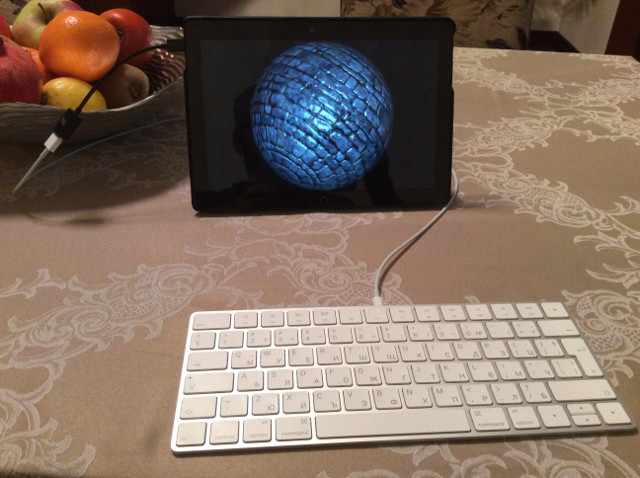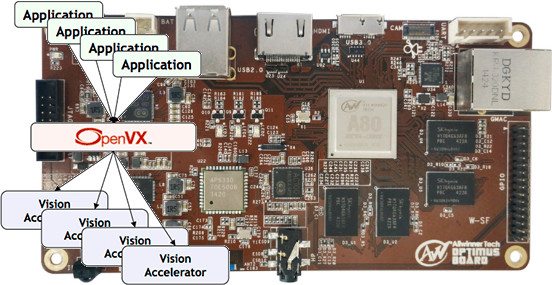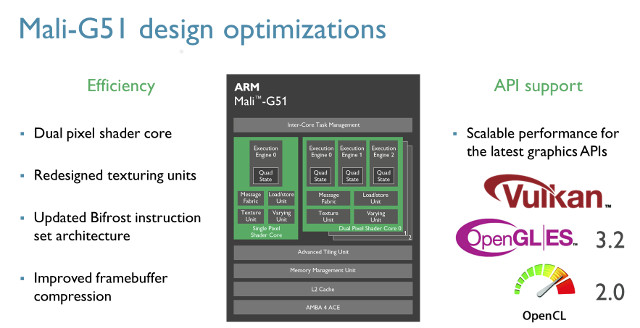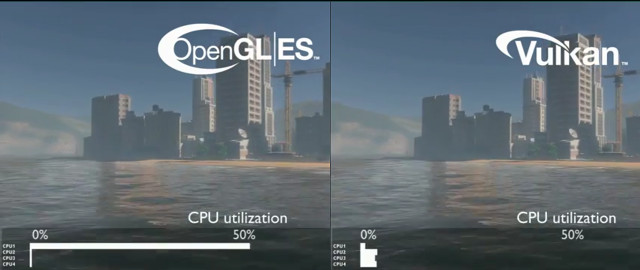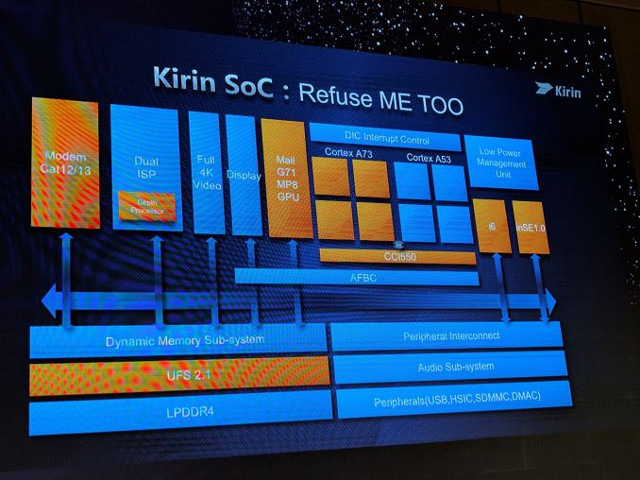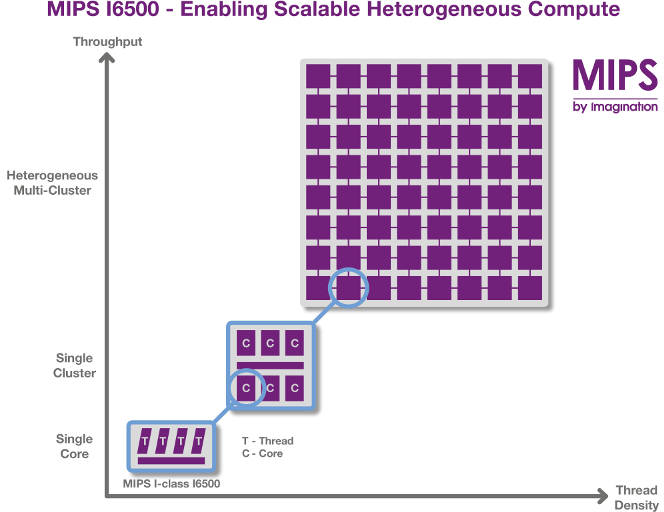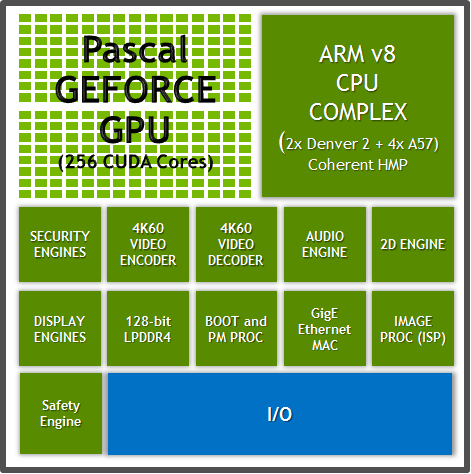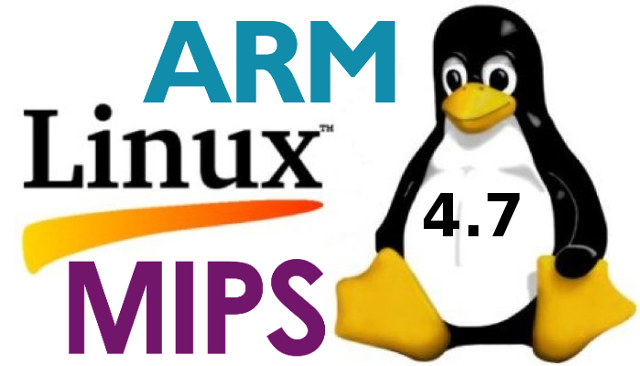Blu wrote BQ Aquaris M10 Ubuntu Edition review – from a developer’s perspective – last year, and now is back with a new post explaining how to develop and deploy OpenGL ES applications directly on the Ubuntu Touch tablet. Ever since I started using a BQ M10 for console apps development on the go I’ve been wanting to get something, well, flashier going on that tablet. Since I’m a graphics developer by trade and by heart, GLES was the next step on the Ubuntu Touch for me. This article is about writing, building and deploying GLES code on Ubuntu Touch itself, sans a desktop PC. Keep that in mind if some procedure seems unrefined or straight primitive to you – for one, I’m a primitive person, but some tools available on the desktop are, in my opinion, impractical on the Touch itself. That means no QtCreator today, nor Qt, for […]
Imagination PowerVR G6230 is the First GPU To Pass Khronos OpenVX 1.1 Conformance
The Khronos Group is the non-profit consortium group behind open standards and APIs for graphics, media and parallel computation such as OpenGL for 3D graphics, OpenCL for GPGPU, OpenVG for 2D vector graphics, etc… OpenVX is one of their most recent open, royalty-free standard, and targets power optimized acceleration of computer vision applications such as face, body and gesture tracking, smart video surveillance, advanced driver assistance systems (ADAS), object and scene reconstruction, augmented reality, visual inspection, robotics and more. The first revision of the standard was released in 2014, and the latest OpenVX 1.1 revision was just released in May 2016. We’ve already seen OpenVX 1.1 support in Nvidia Jetson TX1 module & board, but Khronos has a conformance program to test implementations, and if successful, allow companies to use the logo and name of the API. The version first GPU to pass OpenVX 1.1 conformance is Imagination Technologies PowerVR […]
ARM Introduces Bifrost Mali-G51 GPU, and Mali-V61 4K H.265 & VP9 Video Processing Unit
Back in May of this year, ARM unveiled Mali-G71 GPU for premium devices, and the first GPU of the company based on Bifrost architecture. The company has now introduced the second Bifrost GPU with Mali-G51 targeting augmented & virtual reality and higher resolution screens to be found in mainstream devices in 2018, as well as Mali-V61 VPU with 4K H.265 & VP9 video decode and encode capabilities, previously unknown under the codename “Egil“. Mali-G51 GPU ARM Mali-G51 will be 60% more energy efficiency, and have 60% more performance density compared to Mali-T830 GPU, making the new GPU the most efficient ARM GPU to date. It will also be 30% smaller, and support 1080p to 4K displays. Under the hood, Mali-G51 include an updated Bifrost’s low level instruction set, a dual-pixel shader core per GPU core to deliver twice the texel and pixel rates, features the latest ARM Frame Buffer Compression […]
This Video Shows Vulkan API’s Higher Power Efficiency Compared to OpenGL ES API on ARM SoCs
Vulkan was introduced as the successor of OpenGL ES in March 2015, promising to take less CPU resources, and support multiple command buffers that can be created in parallel and distributed over several cores, at the cost of slightly more complex application programming since less software work in done inside the GPU drivers themselves with app developers needing to handle memory allocation and thread management. This was just a standard at the time, so it still needed some time to implement Vulkan, and work is still in program but ARM showcased the power efficiency of Vulkan over OpenGL ES in the video embedded at the end of this post. The demo has the same graphics details and performance using both OpenGL ES and Vulkan, but since the load on the CPU in that demo can be distributed over several CPU cores with Vulkan against a single core for OpenGL ES, […]
HiSilicon Kirin 960 Octa Core Application Processor Features ARM Cortex A73 & A53 Cores, Mali G71 MP8 GPU
Following on Kirin 950 processor found in Huawei Mate 8, P9, P9 Max & Honor 8 smartphones, Hisilicon has now unveiled Kirin 960 octa-core processor with four ARM Cortex A73 cores, four Cortex A53 low power cores, a Mali G71 MP8 GPU, and an LTE Cat.12 modem. The table below from Anandtech compares features and specifications of Kirin 950 against the new Kirin 960 processor. SoC Kirin 950 Kirin 960 CPU 4x Cortex A72 (2.3 GHz) 4x Cortex A53 (1.8 GHz) 4x Cortex A73 (2.4 GHz) 4x Cortex A53 (1.8 GHz) Memory Controller LPDDR3-933 or LPDDR4-1333 (hybrid controller) LPDDR4-1800 GPU ARM Mali-T880MP4 @ 900 MHz ARM Mali-G71MP8 @ 900 MHz Interconnect ARM CCI-400 ARM CCI-550 Encode/ Decode 1080p H.264 Decode & Encode2160p30 HEVC Decode 2160p30 HEVC & H.264 Decode & Encode2160p60 HEVC Decode Camera/ISP Dual 14bit ISP 940MP/s Improved Dual 14bit ISP Sensor Hub i5 i6 Storage eMMC 5.0 UFS 2.1 Integrated Modem […]
Imagination Technologies Announces MIPS Warrior I-class I6500 Heterogeneous CPU with up to 384 Cores
Imagination has just unveiled the successor of MIPS I6400 64-Bit Warrior Core with MIPS Warrior I-class I6500 heterogeneous CPU supporting up to 64 cluster, with up to 6 cores each (384 cores max), themselves up to 4 thread (1536 max), combining with IOCU (IO coherence units), and external IP such as PowerVR GPU or other hardware accelerators. The main features of MIPS I6400 processor are listed as follows: Heterogeneous Inside – In a single cluster, designers can optimize power consumption with the ability to configure each CPU with different combinations of threads, different cache sizes, different frequencies, and even different voltage levels. Heterogeneous Outside – The latest MIPS Coherence Manager with an AMBA ACE interface to popular ACE coherent fabric solutions such as those from Arteris and Netspeed lets designers mix on a chip configurations of processing clusters – including PowerVR GPUs or other accelerators – for high system […]
Nvidia Provides More Details About Parker Automotive SoC with ARMv8 Cores, Pascal GPU
Nvidia demonstrated DRIVE PX2 platform for self-driving cars at CES 2016, but did not give many details about the SoC used in the board. Today, the company has finally provided more information about Parker hexa-core SoC combining two Denver 2 cores, and four Cortex A57 cores combining with a 256-core Pascal GPU. Nvidia Parker SoC specifications: CPU – 2x Denver 2 ARMv8 cores, and 4x ARM Cortex A57 cores with 2MB + 2 MB L2 cache, coherent HMP architecture (meaning all 6 cores can work at the same time) GPUs – Nvidia Pascal Geforce GPU with 256 CUDA cores supporting DirectX 12, OpenGL 4.5, Nvidia CUDA 8.0, OpenGL ES 3.1, AEP, and Vulkan + 2D graphics engine Memory – 128-bit LPDDR4 with ECC Display – Triple display pipeline, each at up to 4K 60fps. VPU – 4K60 H.265 and VP9 hardware video decoder and encoder Others: Gigabit Ethernet MAC Dual-CAN […]
Linux 4.7 Release – Main Changes, ARM and MIPS Architectures
Linux 4.7 is out: So, after a slight delay due to my travels, I’m back, and 4.7 is out. Despite it being two weeks since rc7, the final patch wasn’t all that big, and much of it is trivial one- and few-liners. There’s a couple of network drivers that got a bit more loving. Appended is the shortlog since rc7 for people who care: it’s fairly spread out, with networking and some intel Kabylake GPU fixes being the most noticeable ones. But there’s random small noise spread all over. And obviously, this means that the merge window for 4.8 is open.Judging by the linux-next contents, that’s going to be a bigger release than the current one (4.7 really was fairly calm, I blame at least partly summer in the northern hemisphere). Linus Linux 4.6 brought USB 3.1 superspeed, OrangeFS distributed file system, 802.1AE MAC-level encryption (MACsec), and BATMAN V protocol support, improved […]


